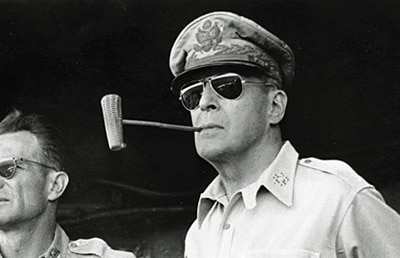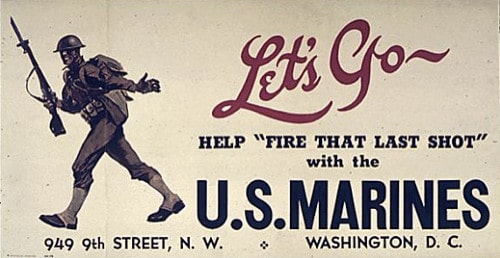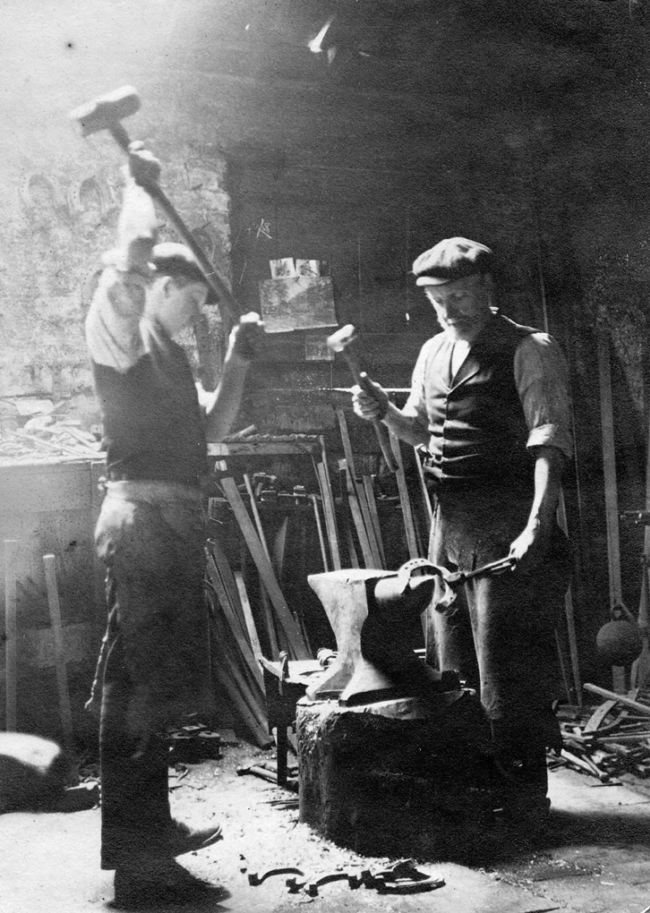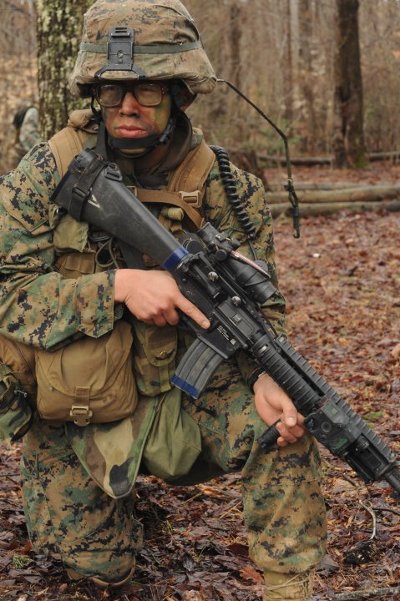 I was 23 years old and attending a wedding where I was a groomsman — it was at this event that I learned firsthand how the Basic School had prepared me for more than just leading Marines. In a room with five other young men, I was the only one who knew how to properly wear black tie shirt studs, cuff-links, and the cummerbund. Needless to say, I gave a quick class and we all looked great that evening. Had we been in this situation just one year earlier, I too would have been at a loss as to what all the metal trinkets were for. So what happened to my sense of style in Quantico? Obviously the lessons I learned from various hard-charging gunnery sergeants and detail-oriented officers had indirectly sharpened my understanding of civilian style and appearance.
I was 23 years old and attending a wedding where I was a groomsman — it was at this event that I learned firsthand how the Basic School had prepared me for more than just leading Marines. In a room with five other young men, I was the only one who knew how to properly wear black tie shirt studs, cuff-links, and the cummerbund. Needless to say, I gave a quick class and we all looked great that evening. Had we been in this situation just one year earlier, I too would have been at a loss as to what all the metal trinkets were for. So what happened to my sense of style in Quantico? Obviously the lessons I learned from various hard-charging gunnery sergeants and detail-oriented officers had indirectly sharpened my understanding of civilian style and appearance.
The deadliest Roman gladiators are said to have paid special attention to the ornamentation on their armor and weapons. Ukrainian Cossacks, before riding into battle, spent hours ensuring their hair was properly cut and braided. Today, modern military warriors spend hours every week ensuring their wardrobes and personal appearance meet both regulation and their own standards of professionalism. What is the connection?

Never laugh at a Ukrainian Cossack’s haircut. I mean never.
This article covers seven lessons pertaining to style and appearance that I picked up while serving in the USMC — let this serve as advance warning that my views are biased due to my branch of service!
Lesson #1: Your Personal Presentation Is Important
From day one, the power of what you wear is obvious in the military because in many ways it symbolizes who you are. The way military personnel greet and interact with each other is based off a rigid rank system. Two men who have never met pass by on a sidewalk — both pay attention to the other and greet with a customary salute. The rules as to who initiates the salute and how it is performed are dictated by a set of century-old guidelines that ensure order under all types of conditions.
Despite us living in a democracy where all are created equal, a less visible system of rank does exist in the civilian world. This ranking system is not based on a written set of rules, but rather an unwritten code of events that has over our lives shaped our behavior. Instead of quick decisions being based off an insignia, snap judgments are made based off the type of clothing you wear. By simply dressing sharp in a nice pair of slacks and a sport jacket, a man goes from being ignored as he enters a busy restaurant to being helped immediately and addressed as sir.
I’ve written about the importance of presentation multiple times, so I won’t dwell on this point; for additional reading, visit this classic AOM article: The Importance of Being a Sharp Dressed Man.
Lesson #2 – Do Not Judge Others Based on Their Appearance
When you work with other military men and women, you have little to judge them on besides their performance and communication skills. You can easily spend a year working with another person and know nothing of how they dress off the job, what type of car they drive, and what they do with their free time. In many ways it’s a solid system — one that allows you to focus on the job and ignore factors that would under normal circumstances skew your perception.
So you can imagine my surprise when I ran into my one of my top performing Marines out on the town and found him to be dressed in a manner I associated with a man who would be a gang member. My preconceived notions were challenged on the spot – here was a young man in the top 1% of his pay grade who had I met through normal civilian channels I would have discounted as a “gangster.” How many other people had I stereotyped because of my inability to look past appearances? The lesson here is although personal presentation is important, we have to resist the temptation to judge others based solely off of what we see.
Lesson #3 – Details Define a Man’s Style

Douglas MacArthur – I’m not sure if this pipe is within Army regulations but it is memorable.
Most people assume the strict uniform rules of the military stamp out any inklings of personal style. This is not the case. Rather, the strict confines of military regulation magnify the small details that can be personalized. Sunglasses, mustaches, haircuts, tattoos, and the degree to which your uniform is pressed and your boots are shined are all scrutinized. To an outsider, a platoon of soldiers may look the same. To a 1st Sgt, he’ll look at the details of the gear and presentation and be able to quickly pick out the hard-core and good to go from the average – he’ll also take special note on the one or two who need “special” attention.
The same is true in civilian style, especially in corporate environments where many men feel a company dress code eliminates individuality. This is just not true – I have yet to see a dress code that specifies fit and style requirements for suits or dress shirts. As such there is a lot of room to make even a mundane navy suit and white dress shirt stand out. I have a client who works for AT&T corporate and despite wearing very common colors and patterns manages to be one of the best dressed in his department because he pays special attention to his clothing’s cut and the accessories he accents them with. It is all in the details.
Lesson #4 – A Respect for Protocol

Even Pappy Boyington wore the right uniform when required.
About once a month I receive an email from someone asking about a black tie dress code situation and whether they can be the exception to the rule and just show up wearing something like a blazer with trousers. My answer is always the same – if the invitation calls for Black Tie, there is no room to negotiate. You must have a respect for the dress code, as to ignore it is to show disrespect for the host who has worked hard to put the event together.
The military teaches a man early on the importance of dressing appropriately. We have rules that prescribe what we should wear when checking into a new duty station, when traveling off base, when attending a ceremony, and serving as a pallbearer and escort. Why all this attention to detail? Because it sets the tone for the event, eliminates areas of confusion, and leverages history and experience to ensure success. A healthy respect for tradition and dress code does not take away from the individual nor seek to exclude; rather, it is there to enrich important moments in our lives.
Lesson #5 – Always Have Your Equipment Ready

Don’t be the guy who forgot to tuck his trousers into his socks – Be Prepared!
Making sure the men and women under your command are fully prepared and ready for deployment is the focus of peacetime military leaders. As such, scheduled and unscheduled inspections ensure units of 10 to 10,000 are ready to go within hours of being called up. For those who haven’t been through one, inspections range from a simple uniform check by a squad leader to an entire Battalion being looked over by the First Sergeant and CO over a period of hours to ensure combat readiness.
Although I haven’t gone through a white glove inspection for over a decade, I still ensure my wardrobe is prepared for any opportunity or challenge that may come my way. Shoes are put away polished, shirts are ironed before they are needed, and all my accessories are placed in a location where they are easily found. Proper preparation takes time and discipline – the payoff is when you need to be dressed quickly, you are. Compare this with being stressed out and showing up late to an interview, or worse, letting down the ones you care about. Take a few moments to prepare today, and you’ll save time by not having to apologize tomorrow.
Lesson #6 – Our Appearance and Behavior Reflects on Our Associations
Pulling into a foreign port, the big worry on the mind of unit leaders is that some yahoo under their command is going to cause an international incident. If one Marine or Sailor screws up, the whole ship, the whole US military, receives a black eye. For this very reason it is stressed time and time again to every military man leaving post or ship – although you’re not wearing a uniform, you still represent the military in the eyes of others.
As men our appearance and behavior reflect not only on us, but on our entire family and the organizations we are closely associated with. Are you a student council member? Then know the actions you take (or fail to take) in the classroom and off campus reflect upon not only you but the whole council. Like to head to the local watering hole after work to unwind? Be careful about having too much to drink. You might not be embarrassed about getting trashed and carried out the back door, but your family is. Please note I’m not against a good time – rather I want to drive home the reality that very few of us live in a vacuum where our actions do not affect the groups we are a part of.
Lesson #7 – Appreciate Your History

I almost gave the USMC Boat Cloak its own article.
Ask any U.S. Marine what the Eagle, Globe and Anchor stands for and be prepared for a history lesson painted with pride and personal meaning. From the cross on the top of an officer’s cover (the quatrefoil) to the blood stripe on a corporal’s trouser, the history embedded in military uniforms are vestiges of the past that units carefully chronicle and ensure new recruits study. Why such a focus on tradition?
Having a strong history gives a man the strength to move forward when he is unsure. He knows he can wear a flower in his lapel not because he saw it in the latest issue of Maxim, but because he knows French soldiers wore them in theirs as they headed off to combat. He doesn’t try to fit into the latest pair of designer jeans to look younger or hip; instead, he realizes the clothing he wears should be timeless and compliment, not detract from, his personal style.
An appreciation of the past gives you the fortitude to resist fashion and embrace timeless, classic style.
See you in the comments.
Written by
Antonio Centeno
President, A Tailored Suit
Articles on Men’s Suits – Dress Shirts – Sport Jackets
Join our Facebook Page & Win Custom Clothing







